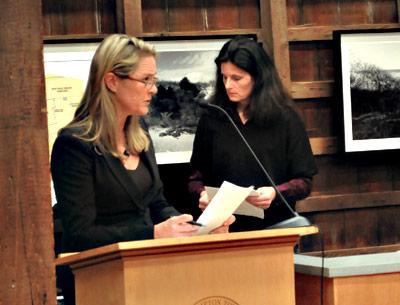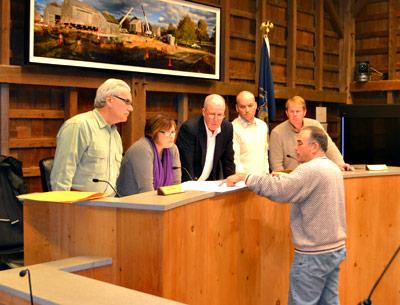Government Briefs 01.30.14
Government Briefs 01.30.14
East Hampton Town
Balasses House Rezoning Hearing
The East Hampton Town Board will hold a public hearing next Thursday on a request by the owners of the former Balasses House antiques shop, a building on Main Street in Amagansett, to rezone the half-acre site from residential, with a limited-business overlay, to a central business zone.
The change would allow the building, now housing an art gallery, to be put to a wider variety of possible commercial uses. The hearing will begin at 6:30 p.m. at Town Hall.
Tax Receiver on Medical Leave
With a resolution passed unanimously on Jan. 21, the East Hampton Town Board granted a leave of absence, under the Family Medical Leave Act, to Monica Rottach, the town tax receiver.
Neide Valeira, a town accountant, was appointed interim tax receiver earlier this month to replace Ms. Rottach, after issues with delivery of tax bills to residents were uncovered for the second year in a row. Town officials are trying to determine why numerous taxpayers did not receive their bills in the mail, and Supervisor Larry Cantwell said Tuesday that a full report was expected within a few weeks.J.P.
New York State
Bow-and-Arrow Setback Reduction
In his proposed state budget for 2014, Gov. Andrew Cuomo has included a provision to reduce from 500 feet to 150 feet the setback from buildings and dwellings for bow-and-arrow deer-hunting, according to a release from Assemblyman Fred W. Thiele Jr. Mr. Thiele said the measure would “greatly increase the areas available for deer hunting on the East End.”
The state Department of Environmental Conservation recommended the move in its Deer Management Plan. The change would be consistent with the setbacks for bow-and-arrow hunting in most adjoining states, Mr. Thiele noted.
Bow-and-arrow hunters need permission from landowners before they can hunt on their property. The new provision, if enacted as part of the budget, would apply to a neighboring structure.
Mr. Thiele, who introduced an identical proposal last year at the request of East End government officials, called enactment of the measure “a good first step” in reducing the number of deer on eastern Long Island.



